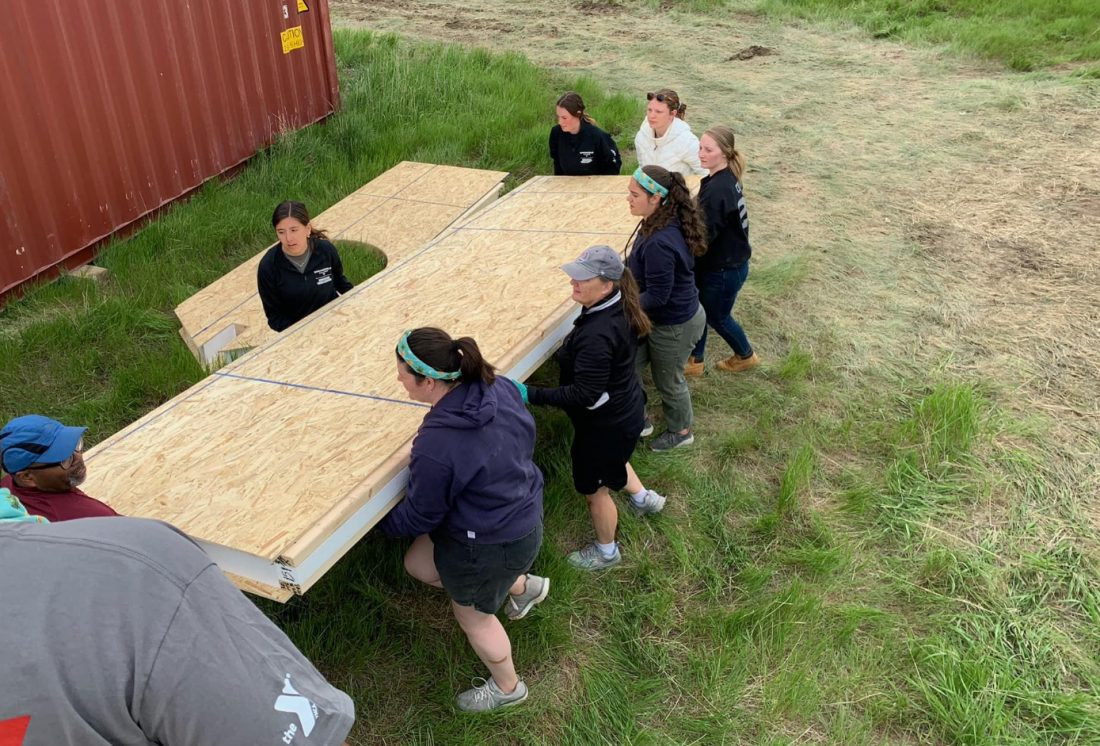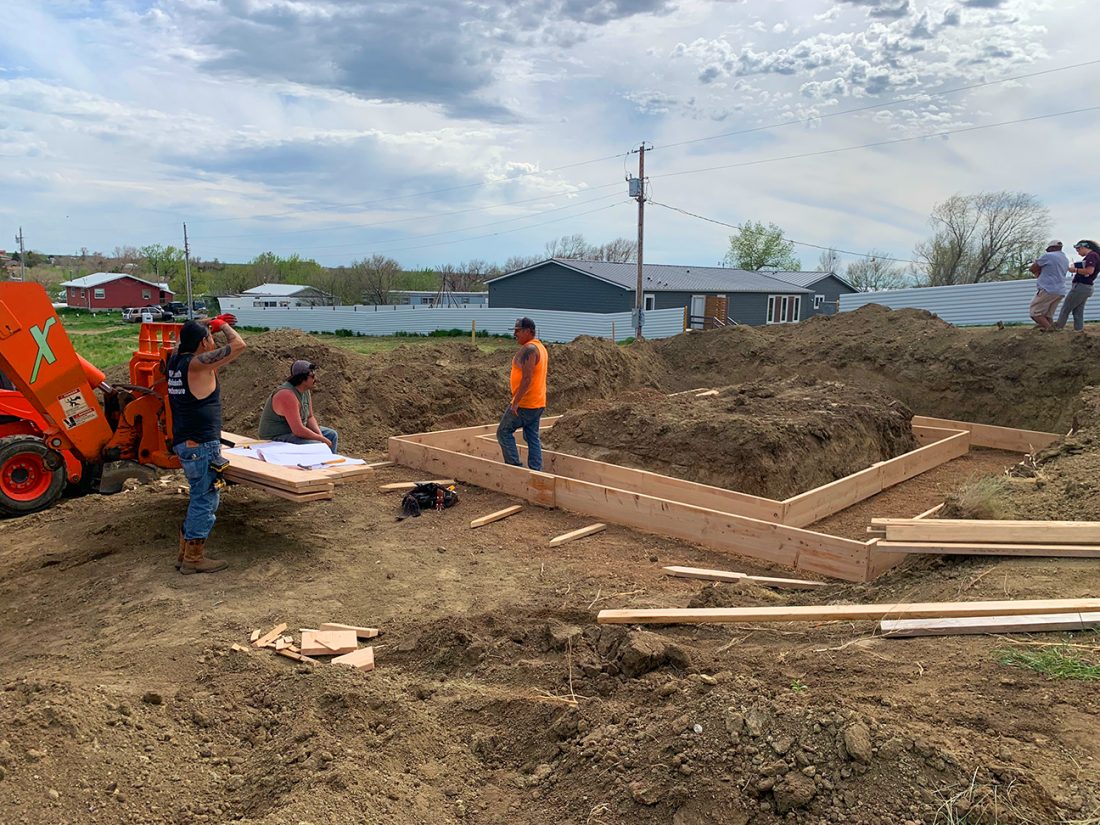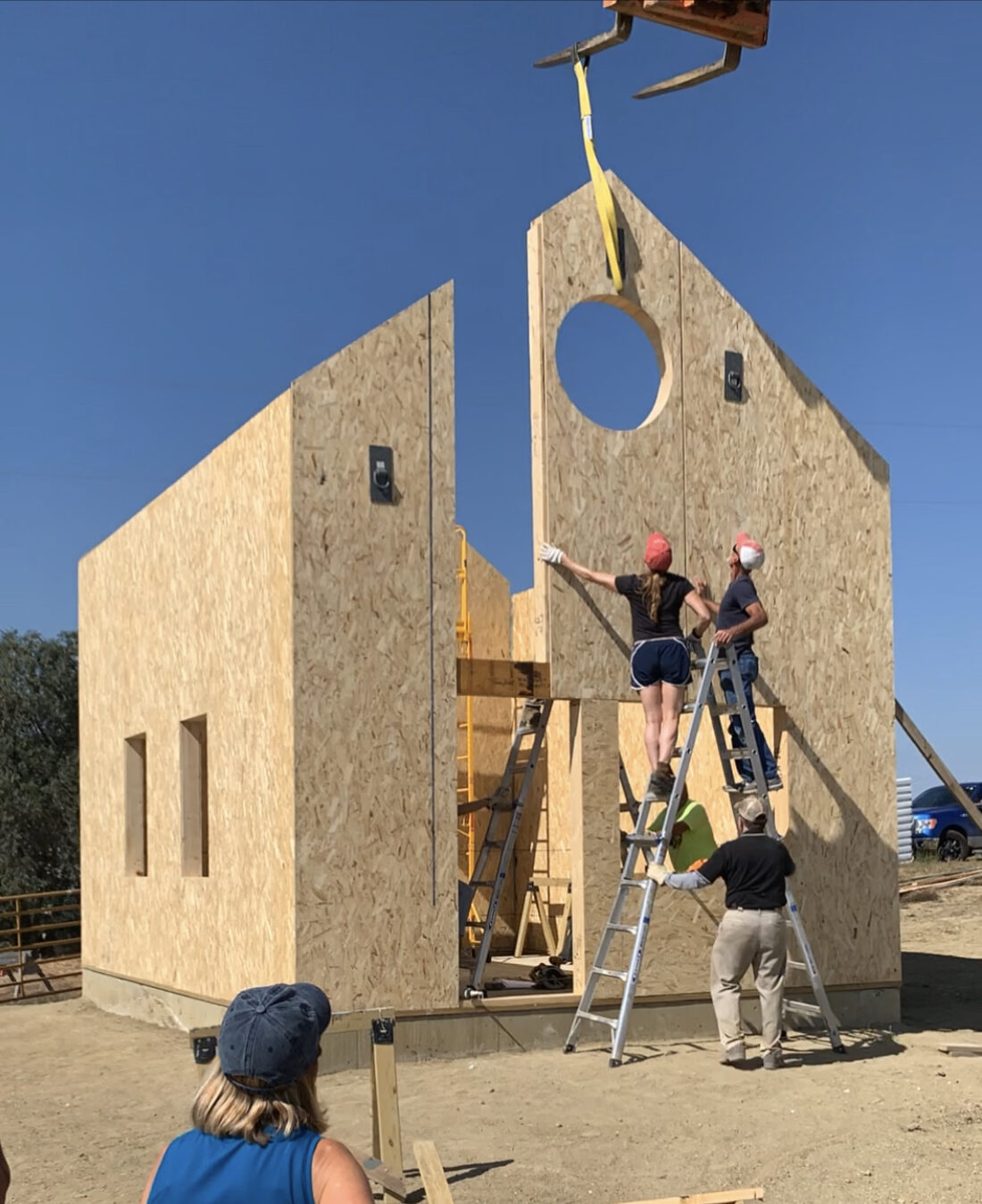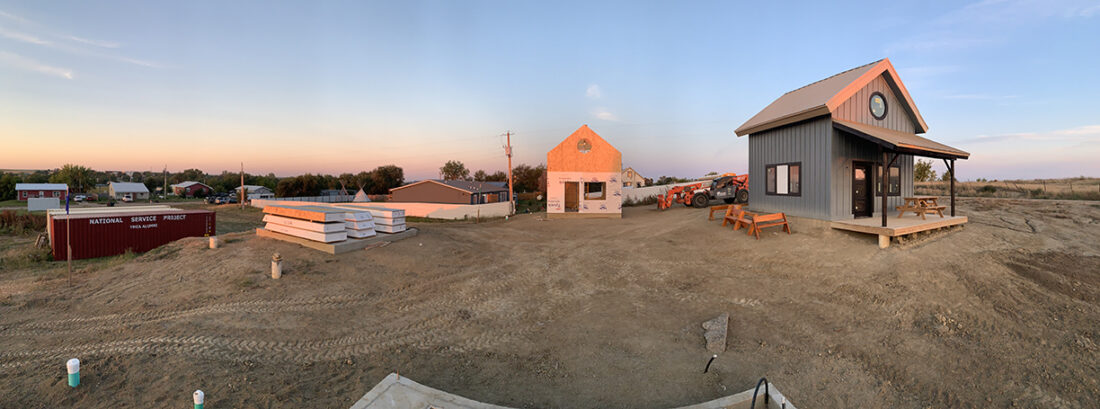Tiny Home Community
The harsh climate of the Great Plains in South Dakota is a force that affects everyone in the area. Extreme weather conditions, such as tornadoes, hail storms and excessive snow accumulation, can make roads impassable for weeks and cause power outages in above-ground grids. The majority of housing on the Lakota reservations was provided by HUD and designed for Arizona’s more temperate climate without the tribe’s input. This has left Cheyenne River residents more vulnerable to climate extremes.
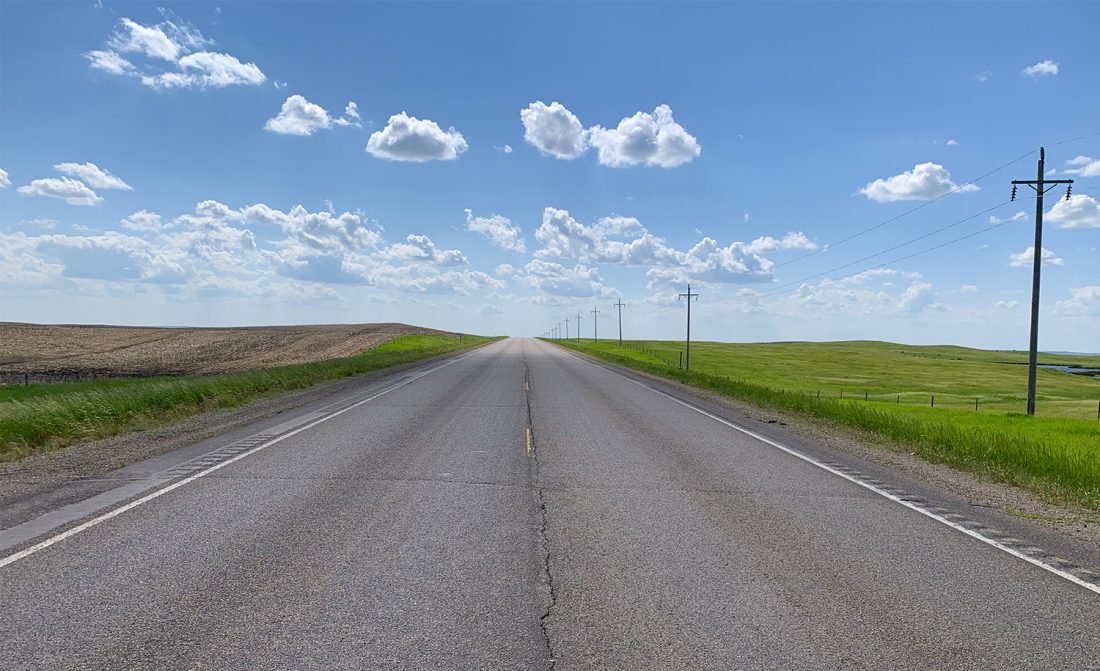
To build tiny homes on the 4th largest land-based reservation is to build for the sustainable future of a nation. This is not a quick fix for a long-term problem, this is the beginning of strategic planning for a long-term solution, this is nation building. It is our hope that the tiny homes will have a positive impact in the community by providing safe and supportive spaces, as individuals and families work toward goals of homeownership.
–
Alli J. Moran
Cheyenne River Lakota
Chairwoman, Sioux YMCA Board of Directors
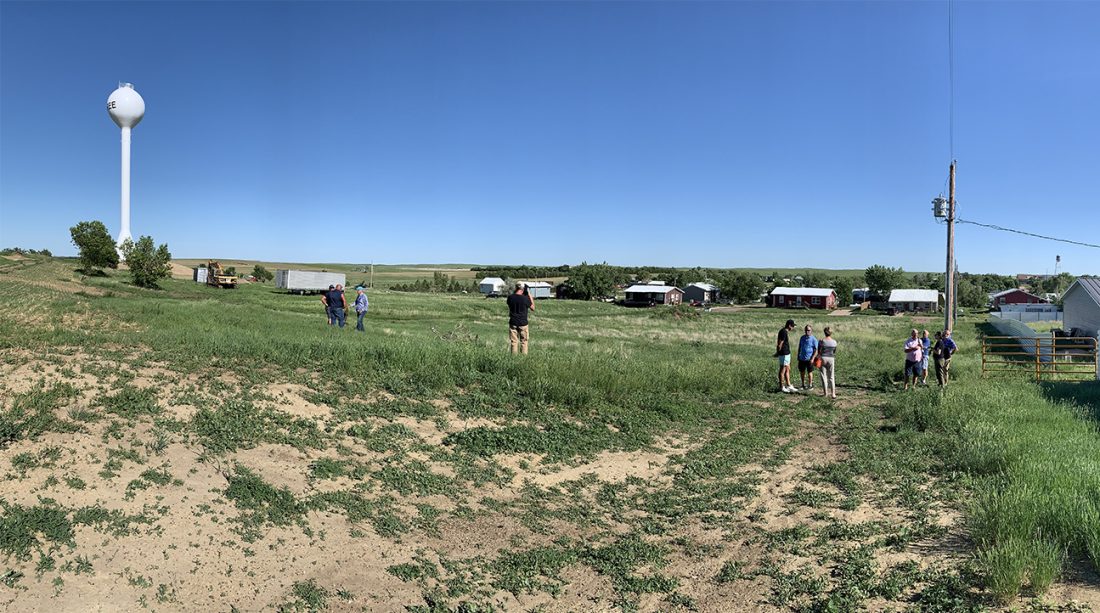
The Tiny Home Community will be a space of healing, with the layout and ethos rooted in Lakota values and spirituality. The site plan, in the shape of a medicine wheel, speaks to the traditional tipi camp layout which included entry from the east, and a community gathering space for cooking and ceremonies in the center of the structures. The homes will all be ADA accessible and will provide opportunities for intergenerational living, which is common in Lakota culture.
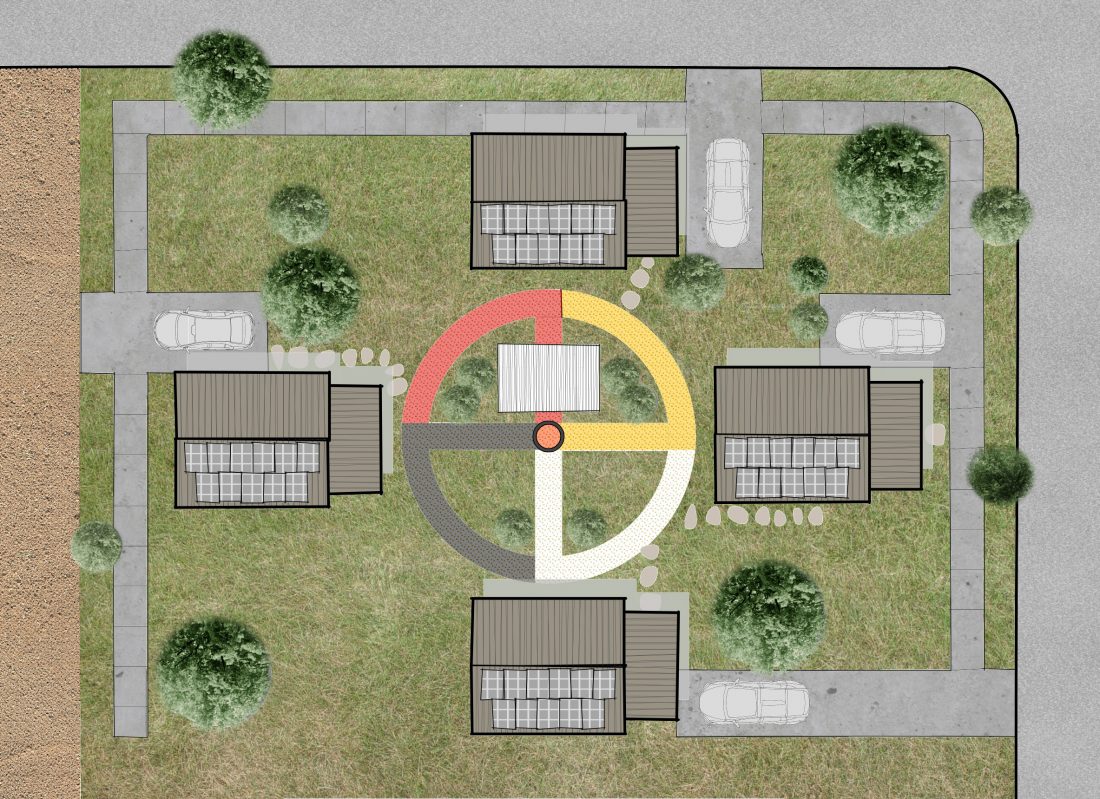
Designed through community engagement with Lakota elders and youth alike, the project offers transitional housing for community members living in overcrowded and/or unsafe living conditions.
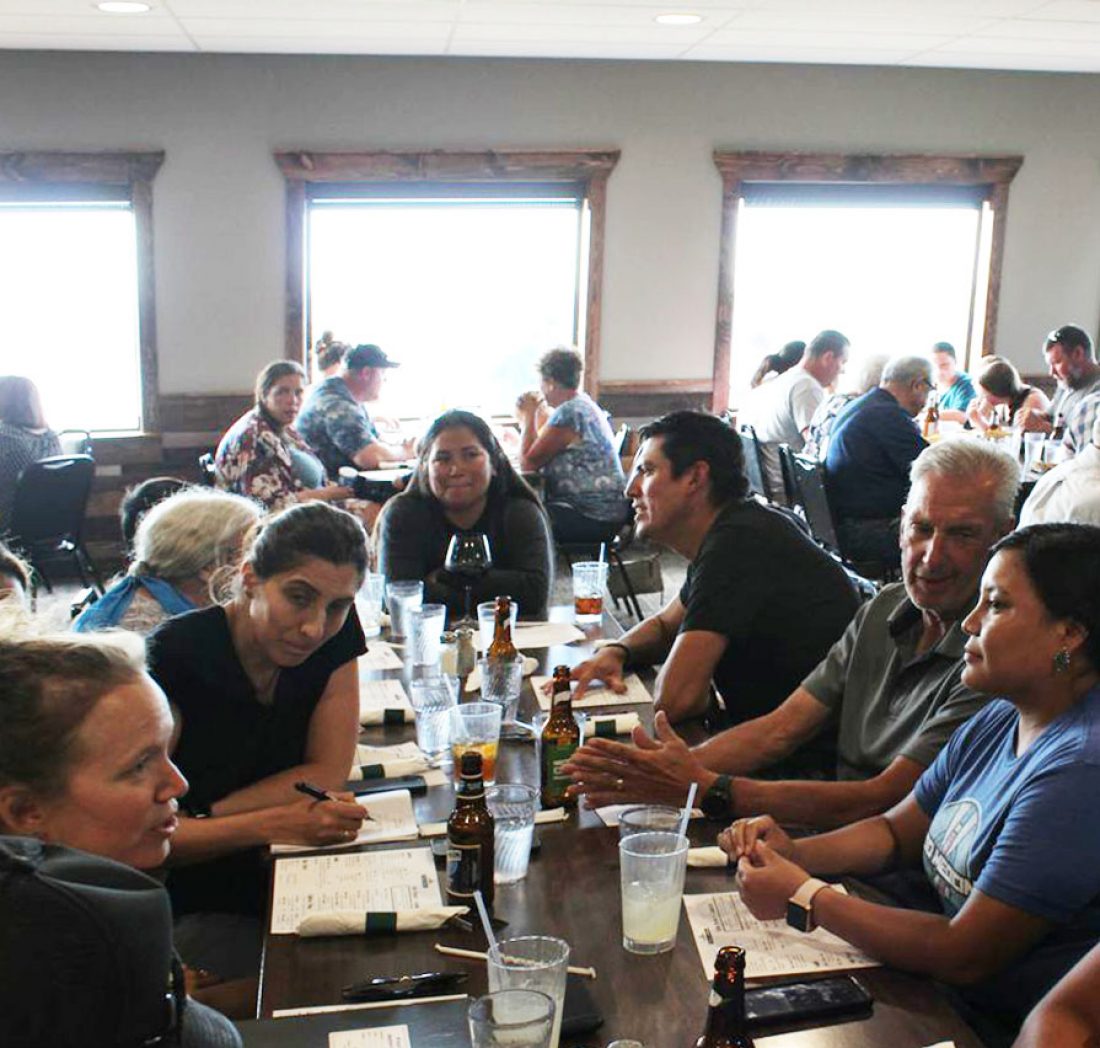
The homes are constructed with SIPs (structurally insulated panels), giving the exterior envelope a passive house insulation value to protect against the prairie’s weather extremes. The circular window above the entry speaks to the cyclical patterns in life and nature which has great significance in Lakota culture. On the exterior of each building there is dedicated space for local artists to create work which will be commissioned by the YMCA.
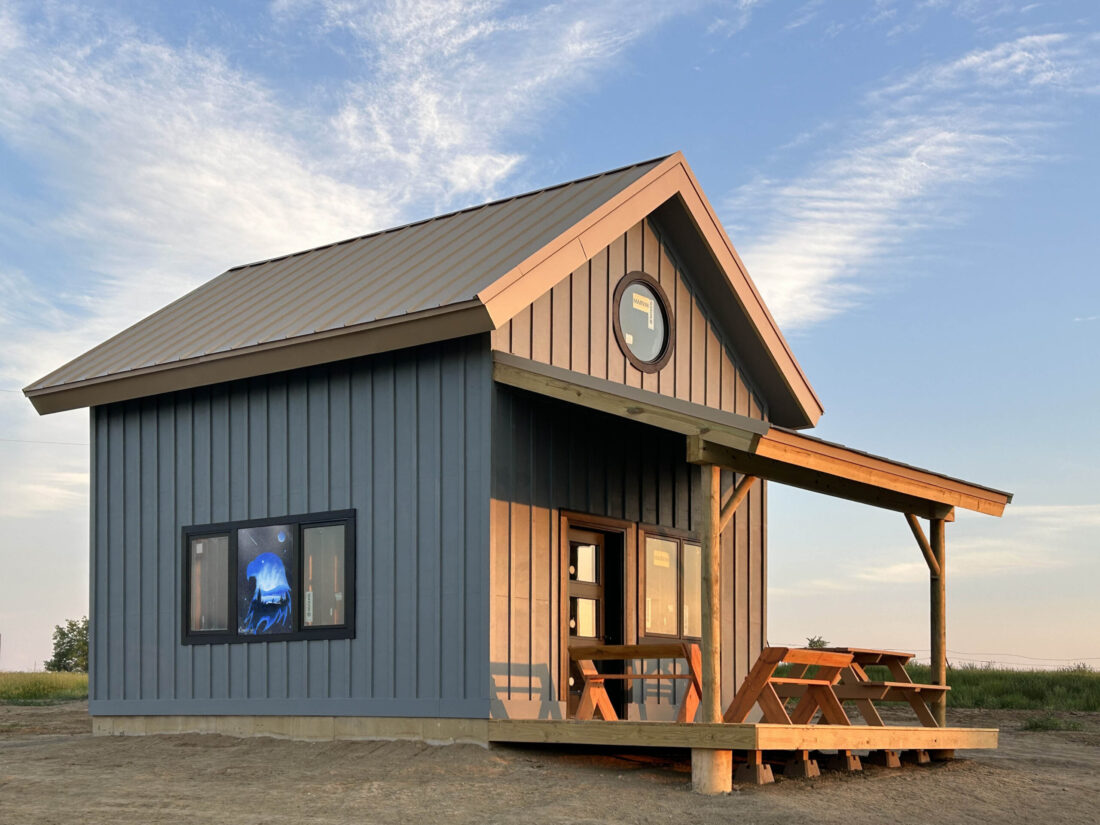
In Lakota culture, everything in our world is related – from humans to animals to plants and resources like the sun and water. Everything has a spirit. Everything is sacred. It is from this mindset that this project will harness the inherent energy nature provides with the goal of being energy sovereign.
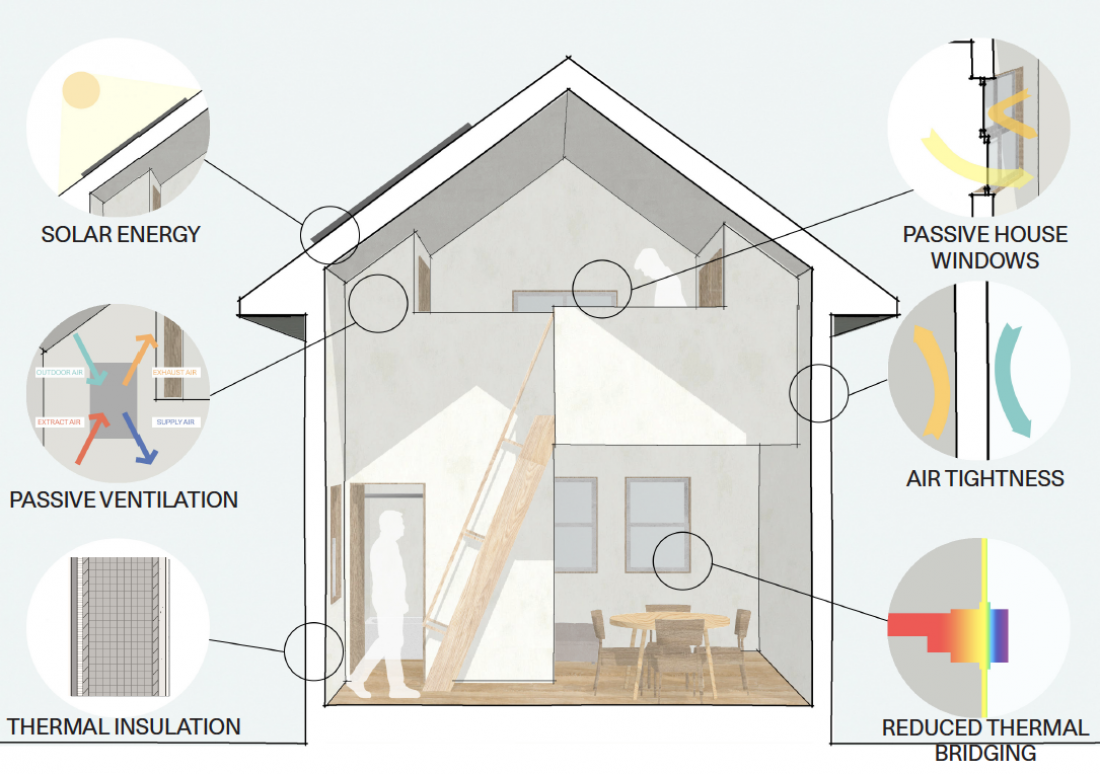
This first (4) house community will take two years to build. The project will be managed by a local Lakota contractor with volunteer labor from the YMCA National Alumni Association. Following completion, the Y plans to duplicate this model in outlying communities across the reservation.
